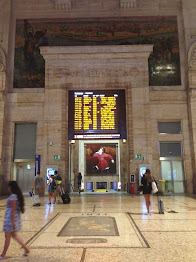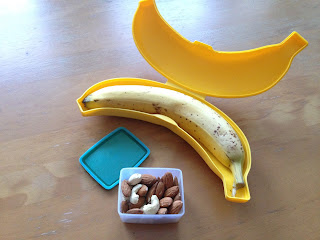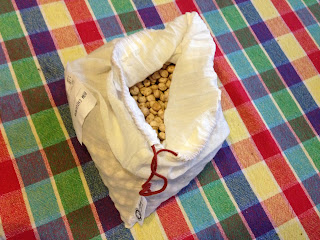Since 2020 has thwarted any latent travel plans, I'm taking the opportunity to reminisce about previous trips, by finally putting together some holiday photo albums, and by writing up some special travel experiences.
Ever since moving to Malta in 2012, I had the dream to one day travel from my new adopted home island in the Mediterranean to my childhood home island in the North of the Netherlands, Texel, over sea and land instead of by plane. When planning a visit back home in August 2019 I decided to take off some days early to take the time to make this dream a reality.
Part 1: Malta to Catania (Sicily)
[Monday 19 August, departure from home at 02:45, ferry to Catania at 04:00, arrival in Catania around 11:00]
Malta is connected to Sicily by two ferry lines: the more well-known Virtu Ferries, a passenger and car ferry operating daily catamaran trips to Pozzallo in the Southeast of Sicily, and Grimaldi Lines, which operate a cargo ferry with some space for passengers that travels to Catania, on Sicily's East coast, and onwards to Salerno, near Naples. While the Virtu ferry offers a much faster trip (around 2.5 hours to Pozzallo) than the Grimaldi line (around 7.5 hours to Catania), in peak summer time I found the Virtu ferry to be too expensive, as a ticket was around €130 versus €30 for the Grimaldi one. I was also excited by the opportunity to try the Grimaldi ferry, as I had never travelled with them before, and arriving in Catania was also easier to catch an onward train, as the train connection from Pozzallo is pretty dismal. The downside was that the ferry was leaving at around 04:00 in the morning, and the final check-in time was 03:00. A nocturnal start to the journey it was. While the ferry does offer cabins, I didn't find it worth it for just a few hours, so I just had a nap on the floor of the cafeteria, as did some other cheapskates. I actually had my camping mat and a sheet with me as I was going on a camping trip in the Netherlands, so I was pretty comfortable. Once the sun rose and light trickled in through the windows, it was time for breakfast. The best thing about travelling on an Italian vessel? Even on board they sell the quintessential 'cafe cornetto' (a good espresso macchiato and the Italian version of a croissant).
On the Grimaldi ferry from Malta to Catania
Contrary to the rapid and sometimes rough ride with the Virtu catamaran, travelling with the Grimaldi ferry seemed like travelling yesteryear: moving at a snail's pace over the smooth August sea makes you feel like even time is slowing down. Nonetheless, after a few hours, the coastline of Catania and silhoutte of Mount Etna crept into sight and around 11:00 in the morning we embarked in the port of Catania. I had booked a room close to the port and the train station, as my train journey onwards would start the next morning. While I could have caught a train to Rome that same afternoon or evening I decided to wait until the next day for several reasons. Firstly, I wanted to avoid missing the train due to any delays with the ferry, as that would mean missing all my connections and losing the full amount paid for the train tickets. Furthermore, I wanted to enjoy the train trip along the Calabrian coast in broad daylight, as I hadn't visited this Southern part of Italy before. Finally, while I have been to Catania on previous occassions, spending an afternoon in the city is always an enjoyable experience. I had a wonderful lunch at a vegetarian cafe La Cucina dei Colori and a stroll through the streets and the Villa Bellini park, before having a good night's sleep at B&B Sicilia Bedda Nice, with a beautiful pink Art Nouveau facade.
Arrival in the port of Catania // Villa Bellini park in Catania
Part 2: Catania to Rome and Milan
[Tuesday 20 August, departure from Catania Centrale 08:41, to Rome Termini, to arrival in Milan around 22:00]
After a quick breakfast at the train station I found my seat on the first train of the day, from Catania to Rome (travel time around 8 hours). I was happy that I bought some snacks and drinks in Catania to take with me, as contrary to what I would have expected, there seemed to be no catering carriage on this train. The trip started off with some hilarity, as the father of a young couple had come on board to help them with their luggages, but didn't manage to get off in time before the whistle and ended up on the train without a ticket, leaving behind his wife on the platform. Catania's train station is right by the sea, and the views were beautiful right from very beginning: the bright blue Mediterranean waters on one side, the historic city and smoking Mount Etna and her foothills on the other.
Departure from Catania Centrale // Smoke from Mount Etna in the distance
By mid morning we had reached Messina, on the Northeast point of Sicily. The island is not connected to the Italian mainland via a bridge or tunnel, but they have come up with an ingenious way to continue the train journey: the train is split in two and boarded on a ferry, which carries train and passengers across the strait to Villa San Giovanni. The crossing is a perfect moment to stretch your legs, get a coffee from the ferry canteen and enjoy the breeze and view from the deck.
A window seat with a view // Train on ferry between Messina and Calabria
Upon arrival in Villa San Giovanni there was some commotion in my train compartment, as it appeared something was stolen from someone's luggage while most passengers had left the train to enjoy the fresh air on the ferry. We waited more than half an hour for the carabinieri to arrive. With no ventilation on and people's nerves rising, the carriage quickly turned into a sweaty and stuffy mess. Thankfully, the police found the culprit, the item was returned to its rightful owner, and we were on our way once again. Once the engine started, so did the air-conditioning and the relaxed mood was restored. The train was very comfortable and had an extendable table, perfect for a book, snack and bottle of water. I also managed to get a few hours of work done on my laptop, as I was preparing a presentation for a conference later that month. There was even electricity, so lack of battery was not an issue. Distraction provided by the magnificent green and blue Calabrian landscapes floating past is another story.
Ever-changing landscapes means you never get bored on the train
There was even enough space to get some work done // The green hills of Calabria
At around 18:30 we arrived at Rome's Termini station. With a little over half an hour remaining to change to the next train to Milan, I found just enough time for a plate of pasta as an early dinner, before continuing the journey. The high speed train to Milan reached a top speed of around 250km/h! In less than 3 hours I set foot in the beautiful central station of Milan. With an hour to go before my nighttrain to Paris, I stepped out into the fresh evening air and enjoyed a beer with a view of the wonderful station entrance.
Arrival at Rome's Termini station // High speed train to Milan
Sunset from the train somewhere in Tuscany // Milan's beautiful station hall
Part 3: Milan to Paris
[Tuesday 20 August, departure from Milan at 23:10, arrival in Paris Gare de Lyon on Wednesday 21 August sometime mid-morning]
From Milan I was taking the Thello nighttrain to Paris, in which I had booked a seat in a 6-bed couchette compartment. I absolutely love travelling on nighttrains: the old-world charm that the compartments exude, the ingenuity of the mechanisms and design, turning a six-seater compartment into a bedroom for as many people within a few minutes, and the coziness of sharing such a communal space with people who were strangers just an hour ago. As the train left at 23:10 at night, once we boarded the train and organized our luggage, it was time for bed. I find that with a few small travel aids (earplugs and an eye-mask) I can sleep remarkably well and and was soon rocked to sleep by the train's movement.
Not the whole night was peaceful though. We were woken up in the early morning by the border patrol for a passport check, which took forever and was accompanied by a lot of noise. We ended up spending around 2 hours at the border until everyone was cleared and we could continue the journey. I tried to sleep a bit more, as it was still dark outside, and I finally woke up as we rolled into Dijon. Because of the time spent stuck at the border we had built up quite a delay and people were getting nervous about arriving late for their connecting trains, trying to calculate how much time they had left and whether they would make it. I was lucky that in the original itinerary I had quite a generous layover in Paris, but I still had to travel from Gare de Lyon to Gare du Nord to make it to my connecting in train in time, so I was also a bit worried. However, as there was nothing to do about it at that time, I enjoyed my breakfast in the catering coupe, watching the mist lift off the green fields of France's heartland and birds on the river bank alongside the traintracks. When we arrived in Paris, I had about 40 minutes to change stations and catch my next train, the Thalys that would take me to Amsterdam. I had looked up which metro I should take while I was on the train and quickly made my way. Thankfully all went well and I could immediately join the queue to start boarding the train.
Breakfast view from the train // A quick snap of Gare du Nord before boarding the Thalys
Part 4: Paris to Amsterdam
[Wednesday 21 August, departure from Paris Gare du Nord at 11:25, arrival in Amsterdam at 14:44]
Once seated on the Thalys, I could breathe a sigh of relief. This was the final pre-booked train ticket I had gotten, so from here onwards there was no more worry about making a connection or not. For the final stretch from Amsterdam to Texel I would be travelling on the regular train network in the Netherlands, with a train leaving every 30 minutes. The flatter landscapes around me were now more and more familiar, large rolls of harvested grain on the pastures and open skies dotted with white clouds. Once I had seen enough of that, there was Murakami to keep me company.
Late summer landscape of Northern France // Plenty of time to enjoy a good book
Characteristic yellow and blue trains and windmills can mean only one thing: arrived in the Netherlands!
Part 5: Amsterdam to Texel
[Wednesday 21 August, departure from Amsterdam at 15:39, arrival on Texel at 17:50]
The last leg of the trip was a journey I have already made countless times. I took the next train from Amsterdam to Den Helder, from there the bus to the harbour and then, finally, the ferry to Texel. After the short 20 minute ferry ride I arrived on my home island and could see my parents waving from the shore :)
Waiting for the last train at Amsterdam Centraal // Waiting for the bus in Den Helder
Celebrating with a classic Texel beer // Arrival in the harbour of Texel
The experience
I have always loved travelling by train and ferry. I think back with happy memories to my student days when I made many European trips over land and sea. To Trondheim in Norway: by nighttrain from Utrecht to Copenhagen, then on to Goteborg, Oslo and finally Trondheim. Sharing beers with strangers on the nighttrain, catching up with a friend in Copenhagen over coffee in the morning during the layover, leaving Oslo at nightfall and riding into the light again where the midnight sun shines in the long days of June. To the south of Spain: catching glimpses of street life in Paris and Madrid while changing trains and seeing the verdant plains and hills of France make way for the olive and citrus gardens of Spain. Then there was a memorable holiday in Greece, characterised by slow travel on numerous ferries from the main port of Piraeus to different islands in the Aegean, experiencing quiet and quaint island life from the deck and gliding over sea at night during the Perseids meteor shower.
There's something about travelling by train and ferry, the slowing down of time, the relative confinement, seeing the landscape change, experiencing the different light of day and the ever-changing vistas. It is no wonder that numerous travel books have been written about epic train and boat journeys, but none about those same trips by airplane (at least, as far as I'm aware!).
Recent years have seen increased global awareness about climate change, including for our contribution as individuals, with ever increasing travel by plane, for weekend trips, to conferences, on far-away holidays. As someone educated in environmental science and an environmentalist at heart, this leads to quite some inner turmoil and guilt any time I want to visit friends or family back home, pursue professional or educational opportunities abroad, or simply want to explore more of our beautiful planet. This year, thinking about travelling has taken on a whole other meaning, and many people are deciding not to travel at all because of the spread of the coronavirus. However, I hope that once the virus is under control and we can travel more freely once again, we consider opting for more sustainable modes, rather than catching a quick flight whenever and wherever we can. After years of diminishing train connections and disappearing nighttrains, there is now a resurgence in investment in the international train network. The 'Back on Track' network campaigns for European cross-border rail connections and night trains. They demand that instead of bailing out airlines, we should invest in the train network as a sustainable alternative. If we make train trips better connected and more affordable, they can be a wonderful way to travel throughout Europe. You can travel from the heart of major cities, while seated comfortably, being able to work, read or listen to music, or simply enjoy the view. Speaking of islands, there is a need to better integrate the existing (and new?) ferry connections with the rail network. Also, as it stands, most ferries still run on fossil fuels. However, there are some exciting pilot projects being run with electric ferries, such as e-ferry Ellen from Denmark.
I look forward to travelling again, especially if it is by train and ferry!
Handy links to plan travel by train and ferry:
Ferry connections between Malta and Sicily (and other Mediterranean destinations):
To plan a cross-country traintrip in Europe:



















































